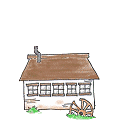The breed is less important than the line of the pig. That is to say, with in many breeds there are good pigs for pasturing, the trick is getting pigs from someone who is already pasturing them the way you want to do it. Pig genetics are very plastic and they adapt to the management and available resources. This means that over generations pigs who are raised in confinement get adapted to do better in confinement and pigs who are raised on pasture get better at utilizing pasture. It's both a matter of genetic and of culture. See this article:
http://sugarmtnfarm.com/2015/01/13/classic-large-white-sow/
and also read the articles linked to at the end of that article for more information about pigs, pasture and genetic lines.
I have raised pigs purely on pasture. They grow more slowly and are leaner even with my best genetics than if I also supplement with dairy. The purpose of the dairy is primarily to boost the growth rate. I use the resources available to me which in my case includes about 80%DMI pasture/hay, 7%DMI dairy (mostly whey), 2%DMI spent barley from a local brew pub, apples, pumpkins, pears, sunflowers, nuts etc as available. %DMI = Percent of Dry Matter Intake. If you know that for the items in the diet you know the diet. See the feed section and linked articles here:
http://SugarMtnFarm.com/pigs
Not all pigs are created equal, to misquote a certain pig, and not all pastures are equal either. Plant up your pasture with legumes, soft grasses, chicory, amaranth and other things to fit your climate and soils.
Learning to do managed rotational grazing is key. It's much like with other animals with some little variations. See the above pigs link and read the grazing section and linked articles.
-Walter Jeffries
Sugar Mountain Farm
in Vermont













 1
1








 2
2














